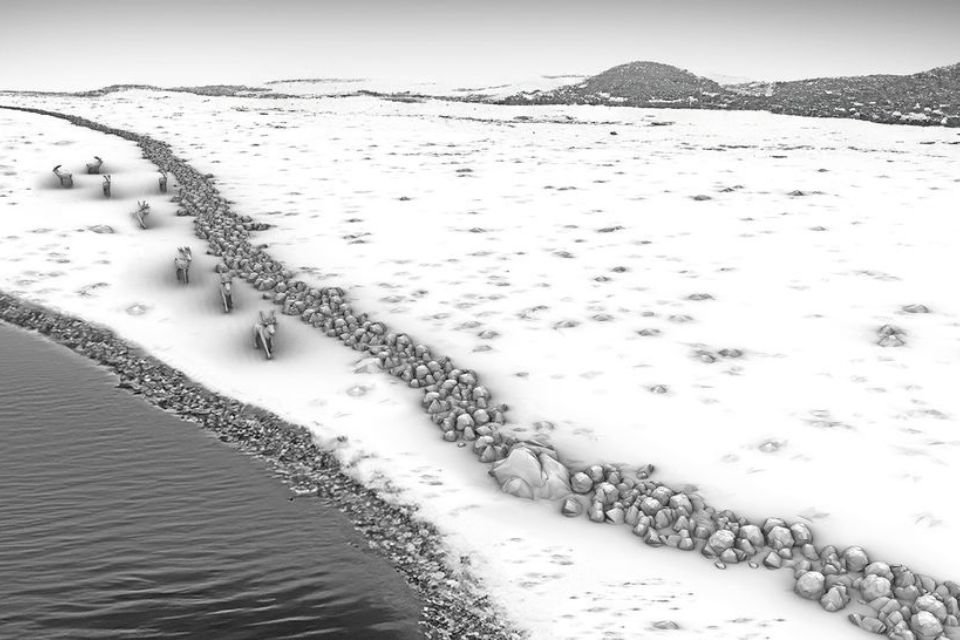A submerged stone wall recently discovered in the Baltic Sea A Stone Age megastructure approximately 11 thousand years old, probably built by hunter-gatherers to capture reindeer. According to the study published in the journal PNAS, the set contains “1,673 individual stones, generally less than 1 meter tall, placed side by side over a distance of 971 metres.”
This type of formation, discovered almost by chance in 2021, may provide unique information about late glacial and Mesolithic cultures in this inland sea environment, where levels increased dramatically during the Littorina transgression after years of glaciation.
This geological event, which occurred in Northern Europe approximately 7,500 to 4,000 years ago, flooded coastal areas from the mid-Holocene onwards and formed some basins that still preserve intact some of the Paleolithic structures that collapsed on land.
How was the sunken structure in the Baltic Sea positioned?
According to the paper’s first author, Professor Jacob Geersen of the University of Kiel, Germany, the discovery happened “out of the blue.” during a 2021 cruise to Mecklenburg Bay to teach students marine geophysics techniques.. He told Live Science he didn’t look for the structure because he had no idea it was in those waters.
The wall was detected according to the data collected by multi-beam sonar, by random mapping of the sea floor in the image created by the equipment’s return of sound waves. Then, based on sonar data and photogrammetric model of the underwater structure, The team created a 3D model of the wall and the reindeer that were stranded on the shore of the lake and are now submerged.
Subsequent mapping was carried out with other vessels and also with an autonomous underwater robot (AUV). Researchers made several dives at different points of the sunken structure to confirm that the structure was built on dry land.
Conducting archaeological research in the Baltic Sea

Although the exact date of construction of the underwater wall cannot be determined, it is estimated that reindeer became extinct in the region about 9,000 years ago, just a few centuries before the great flood that came from the sea.
In addition to mapping the wall, Researchers are investigating artifacts that may have been buried during construction to uncover more data about their origins and uses. “Story”-like structures have already been identified where those responsible for killing the animals could hide in order not to frighten the herd.
The wall of Mecklenburg Bay may be the starting point for archaeological research on coastal shelves, many of which were habitable before sea levels rose after Earth’s last ice age.
Did you like the content? So pay attention to this TecMundo and stay updated with many other Science related updates. To the next one!
Source: Tec Mundo
I’m Blaine Morgan, an experienced journalist and writer with over 8 years of experience in the tech industry. My expertise lies in writing about technology news and trends, covering everything from cutting-edge gadgets to emerging software developments. I’ve written for several leading publications including Gadget Onus where I am an author.












